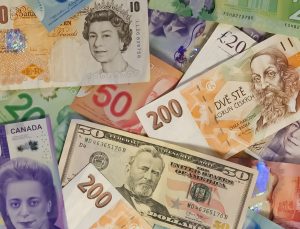Forex is a dynamic and volatile market where currencies from different countries are traded. As traders, we often look for opportunities to gain profits from the fluctuations in the currency pairs. One important factor that we need to consider before making any trades is the correlation between the currency pairs. Correlation is the statistical measure of how two or more currency pairs move in relation to each other. In this article, we will explore the most correlated forex pairs and the impact of correlation on forex trading.
What is correlation in forex trading?
Correlation is the degree of relationship between two or more currency pairs. It is measured on a scale of -1 to +1. A correlation of +1 indicates that two currency pairs move in the same direction, while a correlation of -1 indicates that they move in opposite directions. A correlation of 0 means that there is no relationship between the currency pairs.
In forex trading, correlation is an essential factor that helps traders to assess the risk of their positions. If two currency pairs are positively correlated, it means that they have a high chance of moving in the same direction. In contrast, if two currency pairs are negatively correlated, it means that they have a high chance of moving in opposite directions.
Which forex pairs are most correlated?
There are many currency pairs in the forex market, and each pair has its own unique characteristics. However, some currency pairs are more closely related than others. Below are the most correlated forex pairs:
1. EUR/USD and GBP/USD
The EUR/USD and GBP/USD are the most correlated currency pairs in the forex market. These pairs are positively correlated, which means that they tend to move in the same direction. The reason for this correlation is that both currencies are traded against the US dollar. Therefore, any news or economic events that affect the US dollar will impact both pairs.
2. USD/JPY and S&P 500
The USD/JPY and S&P 500 are positively correlated forex pairs. The S&P 500 is an index that measures the performance of the top 500 companies listed on the US stock exchange. The reason for the correlation between these pairs is that the US dollar is the base currency in USD/JPY, and the S&P 500 is a benchmark for the US economy. Therefore, any significant changes in the US economy or stock market will impact both pairs.
3. USD/CHF and EUR/USD
The USD/CHF and EUR/USD are negatively correlated forex pairs. This means that when EUR/USD is going up, USD/CHF is likely to go down. The reason for this correlation is that the Swiss franc is often used as a safe-haven currency, and when there is uncertainty in the market, investors tend to buy Swiss francs. This leads to a decrease in the value of the USD/CHF.
4. USD/CAD and crude oil
The USD/CAD and crude oil are negatively correlated forex pairs. This means that when crude oil prices go up, USD/CAD tends to go down. The reason for this correlation is that Canada is a major exporter of crude oil, and any significant changes in the oil market will impact the Canadian dollar. Therefore, when crude oil prices rise, the value of the Canadian dollar increases, leading to a decrease in the value of the USD/CAD.
The impact of correlation on forex trading
Correlation is an essential factor that traders need to consider before making any trades. Positive correlation can help traders to diversify their portfolio by taking positions in multiple currency pairs that move in the same direction. However, traders need to be careful not to overexpose themselves to the same market risks.
On the other hand, negative correlation can help traders to hedge their positions by taking positions in currency pairs that move in opposite directions. For example, if a trader has a long position in EUR/USD, they can hedge their position by taking a short position in USD/CHF.
Conclusion
In conclusion, correlation is a crucial factor that traders need to consider before making any trades in the forex market. Positive correlation can help traders to diversify their portfolio, while negative correlation can help traders to hedge their positions. By understanding the most correlated forex pairs and their impact on the market, traders can make more informed decisions and manage their risks effectively.





